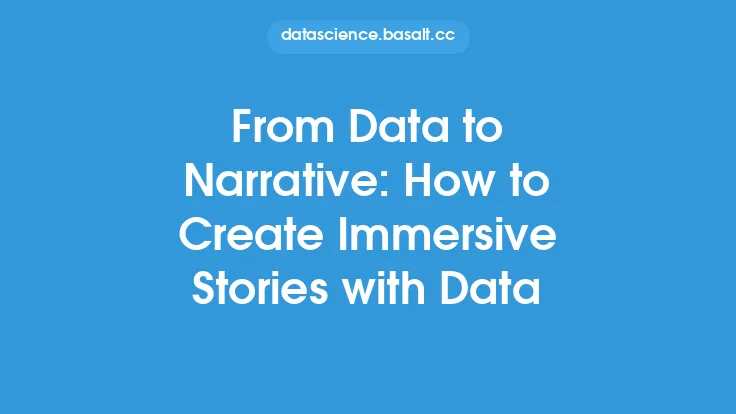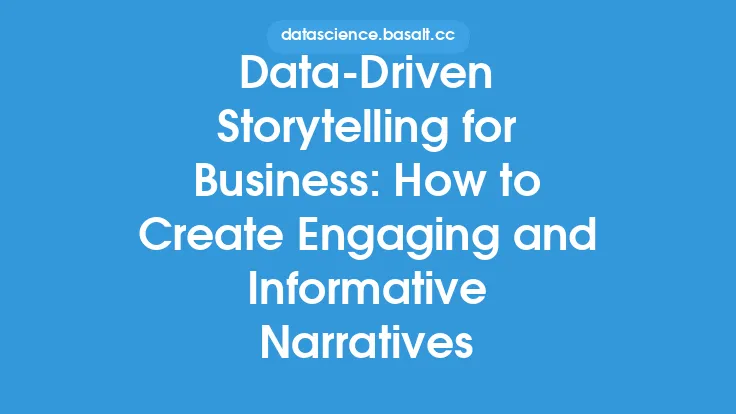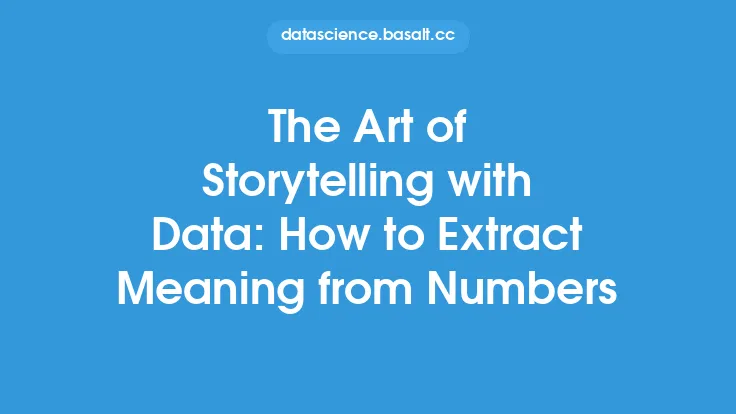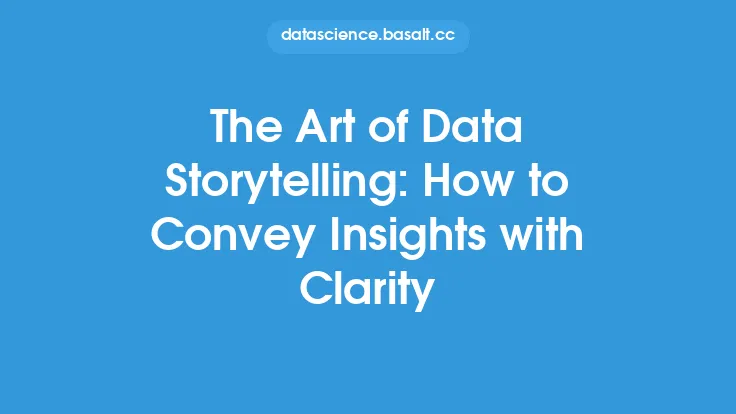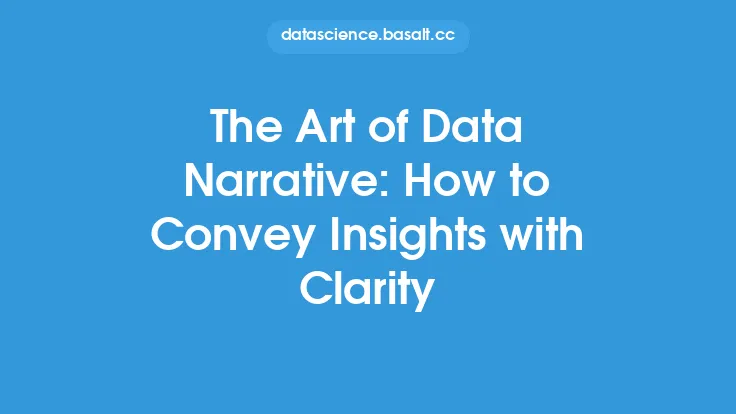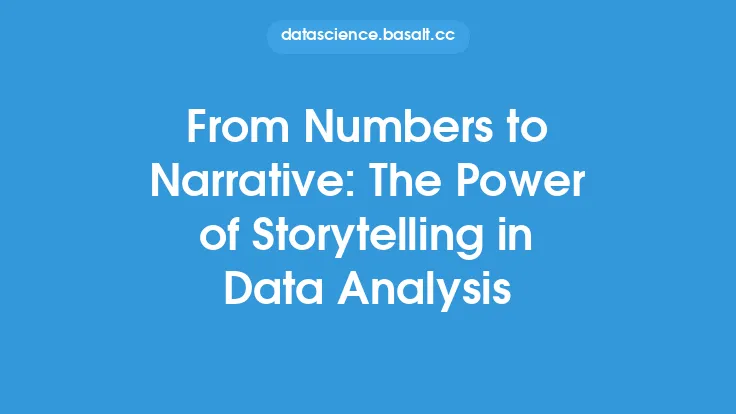The process of creating engaging stories with data involves several key steps, from collecting and analyzing the data to presenting it in a clear and compelling way. At its core, data storytelling is about using data to tell a story that resonates with the audience, and to convey insights and information in a way that is both informative and engaging. To achieve this, it's essential to understand the different types of data, how to prepare and analyze it, and how to use visualization and narrative techniques to bring the story to life.
Understanding Data
To create engaging stories with data, it's crucial to start with a solid understanding of the data itself. This involves knowing the different types of data, including quantitative and qualitative data, and how to collect and prepare it for analysis. Quantitative data is numerical and can be used to identify trends and patterns, while qualitative data is non-numerical and can provide context and depth to the story. By understanding the strengths and limitations of each type of data, data storytellers can choose the most effective data to support their narrative.
Data Preparation and Analysis
Once the data has been collected, it's essential to prepare and analyze it to extract insights and meaning. This involves cleaning and processing the data, handling missing values, and using statistical and machine learning techniques to identify patterns and trends. Data analysis can be performed using a range of tools and techniques, including spreadsheets, programming languages like Python and R, and data visualization software like Tableau and Power BI. By applying these techniques, data storytellers can uncover hidden insights and trends in the data, and use this information to inform their narrative.
Data Visualization
Data visualization is a critical component of data storytelling, as it allows data storytellers to communicate complex information in a clear and concise way. By using visualization techniques like charts, graphs, and maps, data storytellers can illustrate key trends and patterns in the data, and make the information more engaging and accessible to the audience. There are many different types of data visualization, including static and interactive visualizations, and each has its own strengths and weaknesses. By choosing the most effective visualization technique for the story, data storytellers can create a compelling and informative narrative that resonates with the audience.
Crafting the Narrative
With the data analyzed and visualized, the next step is to craft the narrative. This involves using the insights and trends uncovered in the data to tell a story that is both informative and engaging. The narrative should have a clear structure, including a beginning, middle, and end, and should use storytelling techniques like characters, plot, and setting to bring the story to life. By using these techniques, data storytellers can create a narrative that is both compelling and memorable, and that conveys the key insights and information in a way that is easy to understand.
Effective Communication
Effective communication is critical to successful data storytelling. This involves presenting the story in a way that is clear, concise, and engaging, and using language and terminology that is accessible to the audience. Data storytellers should avoid using technical jargon or complex statistical concepts that may be unfamiliar to the audience, and should focus on using simple, intuitive language to convey the key insights and information. By communicating the story in a clear and effective way, data storytellers can ensure that the audience understands and engages with the narrative, and that the key insights and information are conveyed in a way that is both informative and memorable.
Best Practices
To create engaging stories with data, there are several best practices that data storytellers should follow. These include starting with a clear and well-defined question or hypothesis, using high-quality and relevant data, and avoiding bias and assumptions in the analysis and interpretation of the data. Data storytellers should also use visualization and narrative techniques to bring the story to life, and should focus on communicating the key insights and information in a clear and concise way. By following these best practices, data storytellers can create compelling and informative narratives that resonate with the audience, and that convey the key insights and information in a way that is both engaging and memorable.
Technical Considerations
From a technical perspective, creating engaging stories with data involves a range of tools and techniques. These include data visualization software like Tableau and Power BI, programming languages like Python and R, and data manipulation and analysis libraries like Pandas and NumPy. Data storytellers should also be familiar with data storage and management solutions like databases and data warehouses, and should understand how to use these solutions to collect, store, and manage large datasets. By using these tools and techniques, data storytellers can create complex and interactive visualizations, and can analyze and interpret large datasets to uncover hidden insights and trends.
Common Challenges
Despite the many benefits of data storytelling, there are several common challenges that data storytellers may face. These include working with large and complex datasets, communicating technical information to non-technical audiences, and avoiding bias and assumptions in the analysis and interpretation of the data. Data storytellers may also face challenges in terms of data quality and availability, and may need to use creative and innovative solutions to overcome these challenges. By understanding these challenges and using effective strategies to overcome them, data storytellers can create compelling and informative narratives that resonate with the audience, and that convey the key insights and information in a way that is both engaging and memorable.
Future Directions
The field of data storytelling is constantly evolving, with new tools and techniques emerging all the time. In the future, we can expect to see even more sophisticated and interactive visualizations, as well as new approaches to data analysis and interpretation. Data storytellers will also need to be aware of the ethical implications of data storytelling, and will need to use their skills and expertise to create narratives that are both informative and responsible. By staying up-to-date with the latest developments and trends in the field, data storytellers can continue to create compelling and informative narratives that resonate with the audience, and that convey the key insights and information in a way that is both engaging and memorable.
